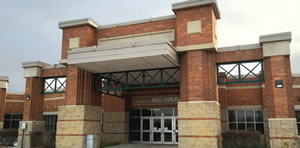Safer Networks, Safer Schools

Maintaining a safe network for operational information
was a concern for Red Wing Public School District.
FRSecure helped them by preforming a multi-phased
security assessment to help ensure safety and security.
Red Wing Public School
District in Red Wing, Minn.,
wanted an information security
partner to help identify vulnerabilities.
Recent news events of major firms being
breached prompted a desire for the district
to be proactive in protecting its information
and network.
The district also considered the
number of devices, buildings and education
staff as compared to the number of
technology staff charged with keeping the
network operational and information safe.
Kevin Johnson, director of Buildings and
Grounds explains, “It is our mission to
educate and we want to give our students
the best education possible and technology
is a vital tool to that end… there have been
major breaches of large corporations who
have hundreds of technicians dedicated, we
have two technicians. If these corporations
are having trouble, are we as secure as we
think we are?”
Credibility in FRSecure came from TV appearances
and radio interviews with founder
and CEO Evan Francen after large information
security breaches were discussed on
major news outlets. However, it was an onsite
visit that persuaded the district to select
FRSecure. Johnson elaborates, “We had your
team come down and talk with our staff.
The conversation was technical; network
configuration, current security measures,
management practices and the like. Through
the conversation it was pretty clear your team
was a good fit and what we needed.”
FRSecure completed an objective multiphased
assessment, which included an
examination of the technical (internal and
external) and physical security controls. The
immediate result of the assessment enabled
the district to pinpoint vulnerabilities within
their system. Another result of the assessment
was that it transitioned the district
away from a reactionary information security
posture with unknown challenges to a
proactive posture with a systematic handling
of known vulnerabilities. Johnson adds.
Red Wing Public School District
values its relationship with FRSecure. “An
information security assessment is not
a one-time event but rather a long term
engagement that is ongoing and requires
a strong partner. FRSecure is that for us,”
concludes Johnson.
www.frsecure.com
This article originally appeared in the issue of .